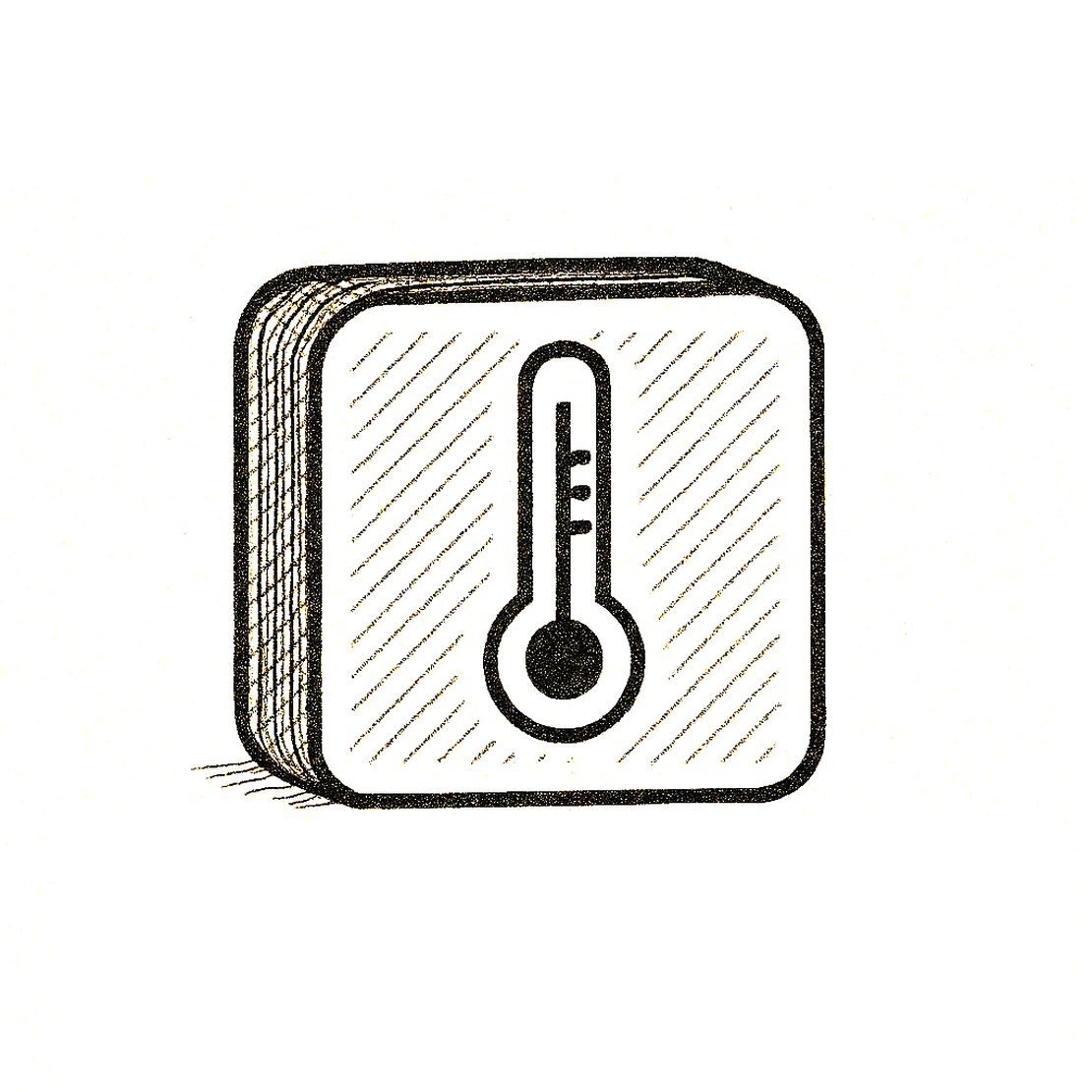A smart temperature sensor is a digital device that measures ambient temperature and communicates that information to a smart home system (via Wi-Fi, Zigbee, Z-Wave, Thread, Bluetooth, etc.) to trigger automations or track environmental conditions.
- Measures ambient temperature (usually in °C or °F)
- Reports that reading to a hub, app, or controller
- Often comes bundled with other environmental sensors (humidity, VOCs, motion, etc.)
- Enables automations based on temperature conditions
How They Work
- Reporting frequency: Some report every 1–5 minutes, others based on ±0.5°C change
- Resolution: Most report to the nearest 0.1°C
- Hysteresis: Many sensors don’t report small fluctuations unless threshold crossed
Limitations & Considerations
| Limitation | Notes |
|---|
| Battery life | Frequent updates can reduce battery to months (vs years) |
| Connectivity | Bluetooth sensors often rely on cloud or extra bridges |
| Latency | Wi-Fi and cloud-reliant sensors may be slower |
| Environment tolerance | Not all are rated for outdoor or freezer use |
| Calibration | Not always adjustable; some report ±1°C off |
| Hub requirements | Zigbee/Z-Wave sensors need the right coordinator |
| Local vs Cloud | Choose local-capable for privacy & speed (e.g. Zigbee with HA) |
What They’re Used For
| Use Case | Description |
|---|
| Thermostat assistance | Provide remote sensing for smart thermostats like Ecobee, Nest, or Tado |
| Zoned comfort control | Adjust HVAC or fans based on room-by-room temperatures |
| Ventilation triggers | Open windows, turn on fans when too hot |
| Freezer/fridge monitoring | Alert if temperatures go out of range |
| Greenhouse monitoring | Track and automate based on environmental changes |
| Water heater or boiler control | Optimize for energy efficiency |
| Presence heuristics | Combine with motion/light sensors for smarter occupancy detection |
Sensor Placement Tips
| Location | Purpose |
|---|
| Bedroom (eye level near bed) | Accurate sleep comfort |
| Avoid direct sunlight | Prevent false heat readings |
| Away from vents | Avoid HVAC-blown temperature distortion |
| Kitchen | Use for cooking ventilation control |
| Inside fridge/freezer (if rated) | Cold-chain monitoring |
| Central locations | Ideal for smart thermostat readings |
Notable Smart Temperature Sensors
| Model | Protocol | Features |
|---|
| Aqara Temperature & Humidity Sensor | Zigbee | Small, battery, accurate, good HA support |
| SwitchBot Meter / Meter Plus | BLE/Wi-Fi (with hub) | LCD, cloud/local, graphs |
| Eve Room (v2) | Thread | Temp + Humidity + VOC, Apple Home/Matter |
| Ecobee Room Sensors | Proprietary (Ecobee) | Work with Ecobee thermostats only |
| Govee Sensors | BLE/Wi-Fi | Cloud-first, app-rich, good for historical data |
| Sonoff SNZB-02 | Zigbee | Affordable, works with Zigbee2MQTT |
| Shelly H&T | Wi-Fi | Local API, long battery life or USB |
| Zooz Q Sensor | Z-Wave | Temp + motion + light in one device |
Conclusion
Smart temperature sensors are essential for comfort, energy savings, and automation.
They measure temperature and communicate with your smart home platform, allowing you to automate heating, cooling, fans, blinds, or alerts.
Pick one based on accuracy, protocol, hub compatibility, and whether you want local or cloud control.
| Brand / Model | Platform Support | Protocol | Power | Notable Features | Tested | Link |
|---|
| Aqara Temperature and Humidity Sensor | HomeKit, HA | Zigbee | Battery | Temperature and humidity | ✅ | Buy |
All links are affiliate — support the site by using them if you buy.